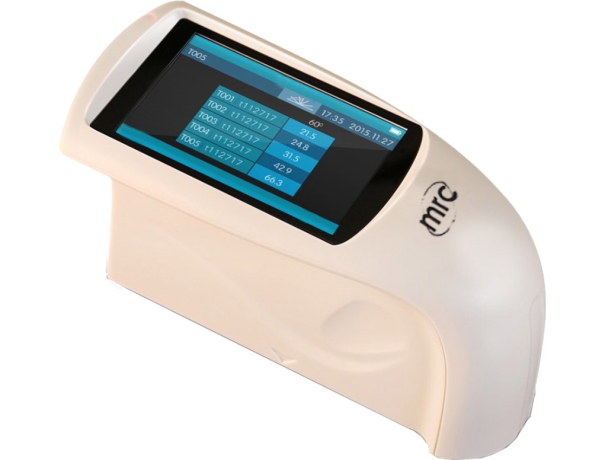Gloss refers to the ability of a surface to reflect light in a specular (mirror-like) manner. It is a visual characteristic that can be observed in a wide range of materials, including plastics, metals, ceramics, and painted surfaces. The gloss level of a material is often categorized into three main classes: high gloss, semi-gloss, and matte.
Gloss meters are specialized instruments designed to measure the amount of light reflected off a surface at a particular angle. They provide numerical values that quantify the gloss level, allowing for objective and standardized assessments. The typical measurement angles used are 20, 60, and 85 degrees, with each angle being suitable for different types of surfaces – low angles for high gloss, and higher angles for matte surfaces.
Applications Across Industries:
- Automotive Industry: Gloss meters are extensively used in the automotive sector to assess the finish of painted surfaces, ensuring that the gloss levels meet the desired standards and contribute to the overall visual appeal of the vehicle.
- Printing and Packaging: In the printing industry, Gloss Meters are vital for maintaining consistency in the appearance of printed materials. From packaging to magazines, precise gloss measurements help achieve the desired print quality.
- Furniture Manufacturing: Wood finishes and laminates often require specific gloss levels to meet aesthetic expectations. Gloss meters assist in ensuring uniformity and quality in furniture production.
- Electronics: The electronics industry utilizes gloss meters for products with glossy surfaces, such as smartphones and tablets. Consistent gloss levels contribute to the perceived quality of these devices.
Quality Gloss Meters
Quality gloss meters are essential tools for measuring and quantifying the gloss of a surface, which is the amount of light reflected off that surface at a specific angle. Here are several reasons why using quality gloss meters is important:
- Consistency in Appearance: Gloss is a crucial factor in the appearance of a product or surface finish. Consistency in gloss levels is vital for maintaining the aesthetic appeal and quality of a product. Gloss meters ensure that the specified gloss levels are consistently achieved, resulting in a uniform appearance.
- Quality Control: Gloss measurements serve as a key parameter in quality control processes across various industries, including automotive, coatings, plastics, and printing. By employing gloss meters, manufacturers can ensure that products meet specific gloss standards and comply with customer expectations.
- Objective Measurements: Gloss meters provide objective and quantitative measurements of gloss, reducing the reliance on subjective visual assessments. This objectivity is particularly important in industries where precise gloss levels are critical for product performance and customer satisfaction.
- Process Optimization: Gloss meters help in optimizing production processes by providing real-time feedback on gloss levels. Manufacturers can make necessary adjustments to parameters such as curing times, coating thickness, or application techniques to achieve the desired gloss finish efficiently.
- Meeting Industry Standards: Many industries have established standards and specifications for gloss levels in their products. Compliance with these standards is often a requirement for regulatory approval and customer acceptance. Gloss meters enable manufacturers to adhere to these standards and ensure product quality and consistency.
- Research and Development: Gloss meters play a crucial role in research and development activities, helping scientists and engineers to understand how different materials, formulations, and processes impact gloss. This information is valuable for innovating new products and improving existing ones.
- Customer Satisfaction: Gloss is a visible and tangible aspect of product quality. Maintaining consistent and appropriate gloss levels contributes to customer satisfaction and loyalty. Products with a high-quality finish are more likely to meet or exceed customer expectations.
